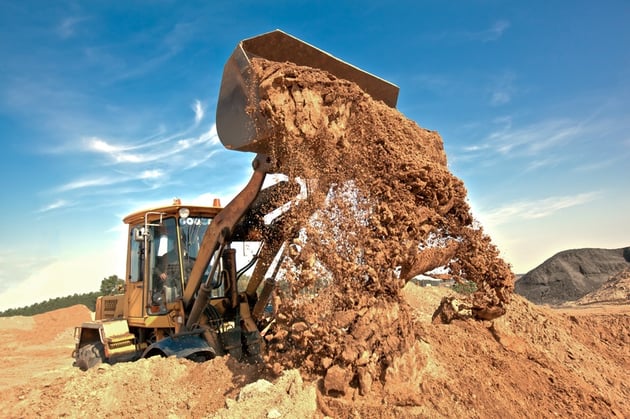Why Earthmoving Equipment is Radializing
As the construction industry continues to rebound in the wake of the Great Recession, problems such as rising labor costs and the need to develop employees mean that construction companies must maximize every dollar spent to remain profitable. Furthermore, confronted with a shortage of skilled labor, construction companies need to ensure they are getting the most out of their most valuable employees. These factors have all led to the rapid adoption of radial tires on today’s earthmoving equipment, to reduce downtime for busy crews and make the most out of their equipment investment.

With the exception of the cost of equipment, tires and fuel are two of the biggest expenses related to earthmovers. Because radial tires cost less over the life of the tire—especially when considering their ability to reduce fuel consumption and improve productivity—they’ve become an attractive option to earthmovers looking for an advantage over their competition.
What gives a radial tire an advantage over bias-ply tires in earthmoving applications is their construction. Radial tire casings are more flexible than their bias-ply counterparts, enabling them to lay down a larger, more rectangular footprint, and engage all of the tires lugs, especially when under load. Because of this, radial tires allow equipment to achieve better traction and less rolling resistance while generating less heat, ultimately providing machinery with reduced fuel consumption. Additionally, because a radial tire lays down a more even footprint than a bias tire, it slips less and wears more evenly, extending the life of the tire.
While radial tires offer many advantages to earthmoving machinery, they can also be advantageous to equipment operators. Since radial tires can be run at a lower air pressure than bias-ply tires, they are less prone to bouncing, which can improve accuracy and increase the equipment’s efficiency. And because they generate less heat than bias-ply tires, they can be run at higher speeds and allow operators to complete jobs faster. Radials also provide a better ride than bias tires which helps to reduce operator fatigue. It might be easy to shrug off operator comfort, but understand it will help keep valuable operators working productively.
As valuable an addition as radial tires have been to earthmoving equipment, there are still a few applications where bias-ply tires are a wise choice; most notably, a low-speed job with a high threat of sidewall puncture is the ideal application for bias tires, because of their thicker sidewalls.
Our brand of Galaxy construction tires has numerous options for outfitting your loader, scraper, grader, or hauler with radial tires. Contact your Galaxy dealer today to learn which tires would work best for your operation, and start seeing the enormous benefits of running your machines on radial tires.


